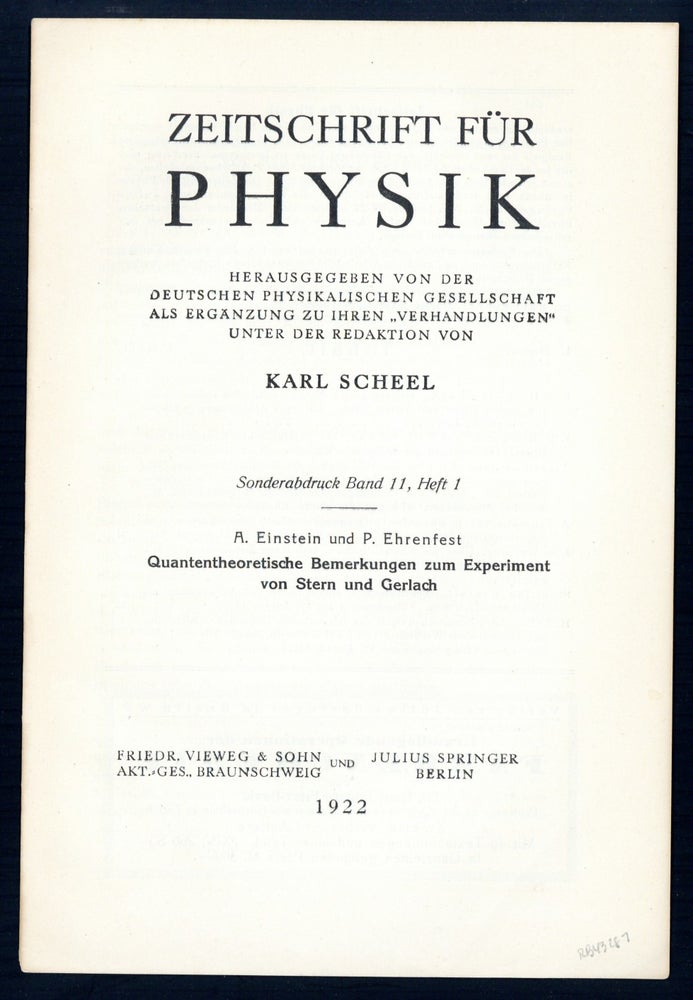
Quantentheoretische Bemerkungen zum Experiment von Stern und Gerlach.
Publisher Information: 1922.
Einstein, Albert (1879-1955) and Paul Ehrenfest (1880-1933). Quantentheoretische Bemerkungen zum Experiment von Stern und Gerlach. Offprint from Zeitschrift für Physik 11 (1922). 31-34pp. 229 x 155 mm. Original printed self-wrappers. Light toning but fine otherwise.
First Edition, Offprint Issue. In 1922 the physicists Otto Stern and Walther Gerlach conducted a now-classic experiment in which a beam of silver atoms was streamed through an inharmonious magnetic field in order to observe the atoms’ deflection patterns. Rather than a random and continuous distribution, as predicted by classical theory, the atoms passing through the field were deflected up or down by a specific amount, demonstrating that they had intrinsically quantum properties. The Stern-Gerlach experiment corroborated the Bohr-Sommerfeld model of the atom and strongly influenced later developments in 20th century physics. However, the experiment also created some serious difficulties for quantum physicists in the period before the rise of the “new” quantum mechanics.
Einstein and Ehrenfest addressed one of these difficulties—connected with space quantization—in their joint paper, in which
"they dealt in particular with the problem of how the orbits of the atom would obtain their discrete directions which they exhibit while passing through the inhomogeneous magnetic field. Under the assumption that the mechanism causing the orientation was provided by the interaction with the radiation field, Einstein and Ehrenfest estimated that for a field strength of 10,000 G a change in the direction of the orbit would take place in roughly 1011 s; this long time interval would be reduced in the presence of heat radiation at room temperature . . . to about 109 s. How could, they asked, the experimental situation be explained, which implied that the discrete orientations of the orbits in silver atoms were obtained in less than 10-4 s. In order to deal with this evident puzzle, Einstein and Ehrenfest proposed two alternatives: first, that the silver atoms were always in the states of spatial quantization; second, the orientations of the electron orbits arose from an interaction of the atoms with the radiation field, which involved much smaller reaction times . . . However, they found that both alternatives created considerable difficulties in the understanding of the atomic processes . . . Thus Einstein and Ehrenfest concluded: 'The difficulties mentioned above show how unsatisfactory are both interpretations of the results found by Stern and Gerlach'" (Mehra & Rechenberg, The Historical Development of Quantum Theory 1, pp. 443-444).
Pais, Subtle is the Lord, p. 328. Weil, Albert Einstein Bibliography, 121.
Book Id: 43287Price: $2,750.00
